
How to Successfully Grow Fly Trap Plant Seeds: A Step-by-Step Guide
Do you have a fascination with carnivorous plants and want to try your hand at growing your own fly trap plant from seeds? Look no further! In this step-by-step guide, we will walk you through the best growing conditions, care tips, and common mistakes to avoid when growing fly trap plant seeds. Whether you are a beginner or an experienced gardener, this guide will provide you with the knowledge and tools to successfully grow your very own fly trap plant. So let’s get started and bring these fascinating and unique plants into your garden!
If you’re fascinated by carnivorous plants and want to try growing your own fly trap plant from seeds, it’s important to understand the best growing conditions and care tips. First, you’ll need to create a suitable environment for the seeds to germinate and grow. Fly trap plants require a specific soil mix that is low in nutrients, such as a mix of peat moss and perlite. It’s important to keep the soil consistently moist but not waterlogged and provide the seeds with plenty of sunlight or artificial light. Avoid using tap water as the high mineral content can harm the plants, so it’s best to use rainwater, distilled water, or reverse osmosis water. Additionally, be mindful of common mistakes to avoid, such as overfeeding the plants, exposing them to excessive heat or direct sunlight, and not providing enough humidity. By following these steps and tips, you can successfully grow your own fly trap plant from seeds and enjoy the unique and fascinating addition to your garden.
Table of Contents
ToggleUnderstanding Fly Trap Plants
is crucial to successfully growing and caring for them. These fascinating and unique plants are intriguing to many people, and if you’re interested in trying to grow your own fly trap plant from seeds, it’s important to understand the best growing conditions and care tips. To start, you’ll need to create a suitable environment for the seeds to germinate and grow. Fly trap plants require a specific soil mix that is low in nutrients, such as a mix of peat moss and perlite. It’s important to keep the soil consistently moist but not waterlogged and provide the seeds with plenty of sunlight or artificial light.
In addition to the soil and light, it’s crucial to use the right water for your fly trap plants. Avoid using tap water as the high mineral content can harm the plants, so it’s best to use rainwater, distilled water, or reverse osmosis water. It’s also important to avoid common mistakes such as overfeeding the plants, exposing them to excessive heat or direct sunlight, and not providing enough humidity.
By following these steps and tips, you can successfully grow your own fly trap plant from seeds and enjoy the unique and fascinating addition to your garden. With proper care, you can bring these captivating plants into your garden and enjoy watching them thrive.
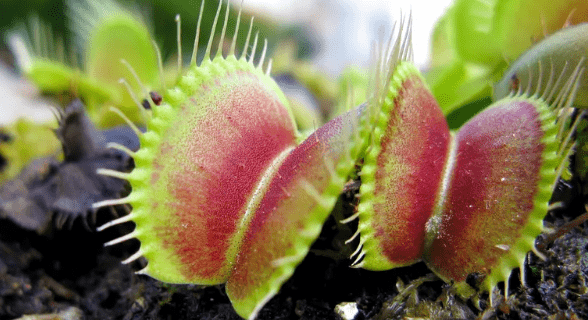
Overview of fly trap plants
Fly trap plants, also known as Venus flytraps, are fascinating and unique plants that can be a great addition to your garden. They are carnivorous plants that are able to capture and digest insects for nutrients. In order to grow fly trap plants successfully, it’s important to provide them with the right environment. This includes using a specific soil mix that is low in nutrients, such as a mix of peat moss and perlite. It’s also crucial to keep the soil consistently moist but not waterlogged and provide the plants with plenty of sunlight or artificial light. In addition to the soil and light, it’s important to use the right water for your fly trap plants. Tap water with high mineral content can harm the plants, so it’s best to use rainwater, distilled water, or reverse osmosis water. It’s also important to avoid common mistakes such as overfeeding the plants, exposing them to excessive heat or direct sunlight, and not providing enough humidity. By following these steps and tips, you can successfully grow your own fly trap plant from seeds and enjoy the unique and fascinating addition to your garden. With proper care, you can bring these captivating plants into your garden and enjoy watching them thrive.
Unique characteristics of fly trap plants
One of the unique characteristics of fly trap plants is their ability to capture and digest insects for nutrients. This sets them apart from other plants and makes them a fascinating addition to any garden. In order to successfully grow and care for these unique plants, it’s important to provide them with the right environment. This includes using a specific soil mix that is low in nutrients, such as a mix of peat moss and perlite. It’s also crucial to keep the soil consistently moist but not waterlogged and provide the plants with plenty of sunlight or artificial light. In addition to the soil and light, it’s important to use the right water for your fly trap plants. Tap water with high mineral content can harm the plants, so it’s best to use rainwater, distilled water, or reverse osmosis water. It’s also important to avoid common mistakes such as overfeeding the plants, exposing them to excessive heat or direct sunlight, and not providing enough humidity. By following these steps and tips, you can successfully grow your own fly trap plant from seeds and enjoy the unique and fascinating addition to your garden. With proper care, you can bring these captivating plants into your garden and enjoy watching them thrive.
Benefits of Growing Fly Trap Plant Seeds
Environmental benefits
Growing fly trap plants from seeds can have environmental benefits. These unique plants are natural insect predators, helping to control the insect population in your garden without the need for chemical pesticides. By reducing the use of chemical pesticides, you can help protect the environment and the beneficial insects in your garden. Additionally, growing fly trap plants can contribute to the overall biodiversity of your garden, creating a healthier and more balanced ecosystem. These plants can also be a fascinating educational tool for teaching children about the natural world and the importance of preserving and protecting our environment. Overall, growing fly trap plants from seeds can have positive environmental impacts and contribute to a more sustainable and eco-friendly garden.
Educational value
: Growing fly trap plants from seeds can provide a valuable educational experience for both children and adults. These unique plants offer a hands-on lesson in the natural world and can spark curiosity about the plant’s unique characteristics and predatory behavior. Watching the plant trap insects can be a captivating and educational experience, teaching kids about the natural processes of plant life and the food chain in a tangible way.
Beyond the biological education, growing fly trap plants can also teach important lessons about responsibility and care. Learning to properly care for these plants can help instill a sense of environmental stewardship and appreciation for the delicate balance of nature. This can be a great opportunity for parents and educators to engage children in discussions about the importance of preserving and protecting the environment.
In addition, growing fly trap plants can be a fun and engaging way to introduce children to the world of gardening and plant cultivation. It can be a hands-on science experiment that allows kids to observe and learn about plant growth and development. Overall, growing fly trap plants from seeds can offer a wealth of educational benefits, making it a valuable addition to any learning environment.
Aesthetic appeal
The aesthetic appeal of growing fly trap plants can add an interesting and unique touch to any indoor or outdoor space. The carnivorous nature of these plants, along with their distinct appearance, can create a visually intriguing display that captures the attention of anyone who sees them. The vibrant colors and interesting shapes of the traps can be a conversation starter and a focal point in any garden or living space. Additionally, the exotic and unusual nature of fly trap plants can add an element of curiosity and fascination to any environment, making them a great addition for those looking to add some character and novelty to their surroundings. Whether used as a decorative element in a home or as part of a larger botanical display, fly trap plants can certainly enhance the aesthetic appeal of any space.
Selecting the Right Fly Trap Plant Seeds
Types of fly trap plant seeds available
When it comes to growing fly trap plants, there are various types of seeds available to choose from. Some popular options include the Venus fly trap, the Cobra plant, and the Sundew plant. Each of these seeds offers unique characteristics and growth patterns, so it’s important to do some research and choose the best option for your needs. Whether you’re looking for a specific color, size, or shape of fly trap plant, there are plenty of options available to suit your preferences. Just be sure to consider the specific care instructions for each type of seed to ensure successful growth.
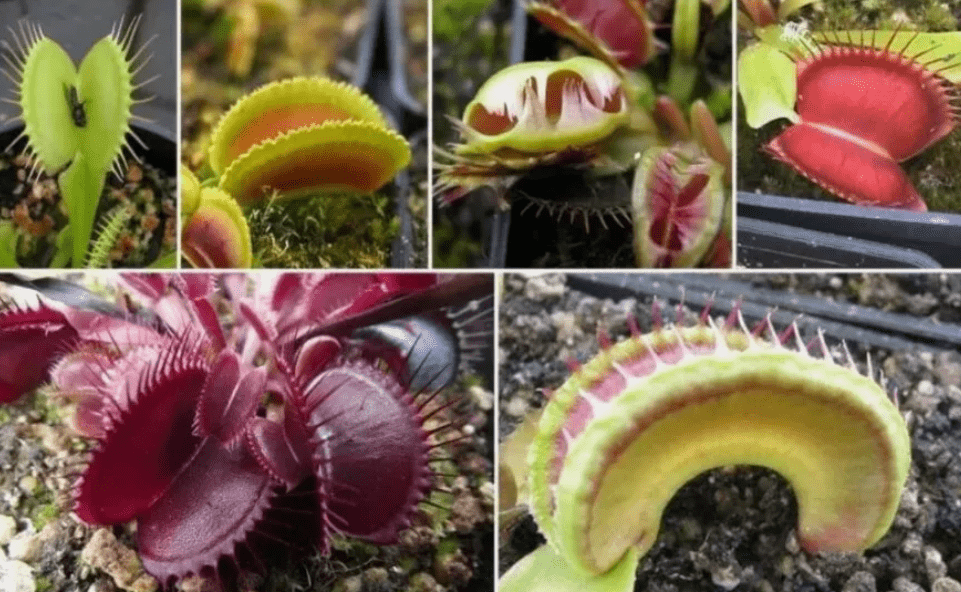
Factors to consider when choosing seeds
Include the climate and environment in which you will be growing the fly trap plants. Different types of fly trap plant seeds may require specific conditions in order to thrive, so it’s important to consider the temperature, humidity, and sunlight levels in your area. Additionally, consider the level of care and maintenance required for each type of seed. Some seeds may be more resilient and easy to care for, while others may require more attention and specific care routines. It’s also important to consider the size and space available for the plants to grow, as well as your own personal preferences in terms of appearance and characteristics. By taking these factors into consideration, you can choose the right fly trap plant seeds that will best suit your needs and environment.
Preparing for Planting
Gathering necessary materials
Gathering necessary materials is an essential step in ensuring successful growth of fly trap plants. Before planting the seeds, make sure to gather the necessary materials such as soil, pots, and watering cans. It’s important to use a well-draining soil mix that is slightly acidic, as this will provide the best growing conditions for the fly trap plants. Additionally, make sure to choose pots that have drainage holes to prevent water from accumulating and causing root rot. When gathering materials, consider the specific care instructions for each type of seed to ensure successful growth. By gathering the necessary materials and following the care instructions, you can set yourself up for a successful and thriving fly trap plant garden.
Creating the ideal environment
Creating the ideal environment is crucial for the successful growth of fly trap plants. These plants require a specific environment to thrive, so it’s important to take the necessary steps to create the right conditions. This includes providing the right amount of sunlight, humidity, and temperature for the plants to grow well. Fly trap plants thrive in bright, indirect sunlight, so be sure to place them in a location where they can receive plenty of light without being directly exposed to the sun. Additionally, these plants require high humidity, so consider using a humidifier or placing a tray of water near the plants to increase moisture in the air. It’s also important to maintain a consistent temperature for the plants, ideally between 70-85 degrees Fahrenheit during the day and slightly cooler at night. By creating the ideal environment for your fly trap plants, you can ensure that they will grow and thrive to their full potential.
Planting Fly Trap Plant Seeds
Step-by-step guide to sowing seeds
Pre-soaking or stratification (if necessary)
Before planting fly trap plant seeds, it is important to consider pre-soaking or stratification if necessary. Pre-soaking the seeds for 24 hours before planting can help to soften the hard seed coat and improve germination. For seeds that require stratification, place them in a damp paper towel in a plastic bag and refrigerate them for 4-6 weeks before planting. This mimics the cold stratification that the seeds would experience in their natural environment. By taking these steps, you can ensure that your fly trap plant seeds have the best chance of germinating and growing successfully.
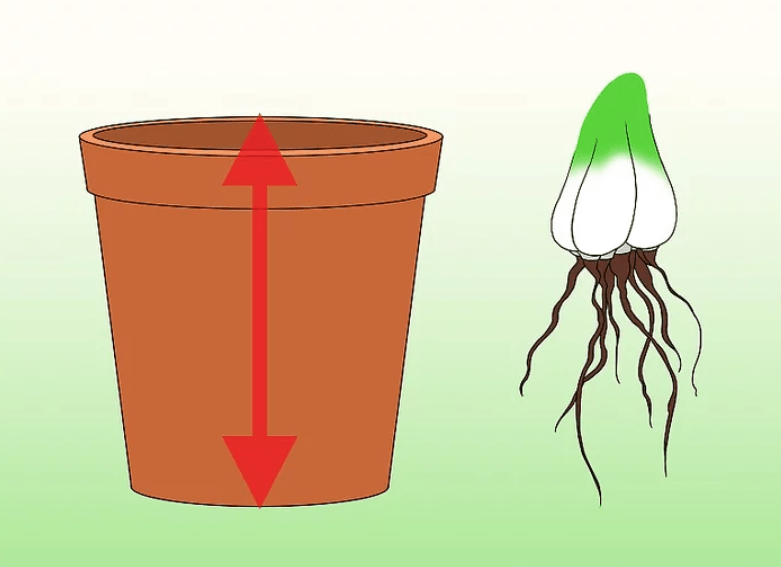
Proper planting depth and spacing
Are crucial for the healthy growth of fly trap plants. When planting the seeds, it’s important to plant them at a depth of about 1/4 inch in a well-draining soil mix. This will provide the seeds with the right amount of moisture and oxygen to germinate and grow. It’s also important to space the seeds at least 3 inches apart to allow for proper airflow and prevent overcrowding as the plants grow. By following these guidelines, you can ensure that your fly trap plants have the best chance of thriving and producing healthy, vibrant foliage. Remember to also maintain a consistent temperature range of 70-85 degrees Fahrenheit during the day and slightly cooler at night to create the ideal environment for your plants to grow and thrive. With proper planting and care, you can enjoy the unique beauty of fly trap plants in your garden or home.
Covering and initial watering
Are important steps in the planting process for fly trap plants. After planting the seeds at the appropriate depth in well-draining soil, it’s important to cover the seeds lightly with a thin layer of soil to protect them and provide the right amount of moisture. This covering will also help to maintain a consistent temperature and humidity level for the seeds to germinate and grow. After covering the seeds, it’s essential to give them an initial watering to ensure that the soil is evenly moist and provide the seeds with the water they need to begin the germination process. Once the seeds have been covered and watered, it’s important to place the planting container in a location that receives bright, indirect sunlight to promote healthy growth. By following these steps, you can ensure that your fly trap plants have the best start and are set up for success as they begin their growth journey.
Germination and Early Care
Timeline for seed germination
Can vary depending on the type of plant, but for fly trap plants, the process typically takes about 4-6 weeks. After planting and initial watering, it’s important to keep the soil consistently moist but not waterlogged to support the germination process. During this time, it’s essential to ensure that the seeds are kept in a warm environment with temperatures around 70-80 degrees Fahrenheit. Once the seeds germinate and the seedlings emerge, it’s important to provide them with plenty of sunlight and continue to keep the soil moist but not waterlogged. As the seedlings grow, you can gradually reduce the moisture levels and allow the soil to dry out slightly between waterings. With proper care and attention, you can enjoy the beauty of fully-grown fly trap plants in your garden or home in around 3-4 months after germination.
Maintaining optimal conditions during germination
is crucial in ensuring that your fly trap plants have the best start and are set up for success as they begin their growth journey. The timeline for seed germination can vary depending on the type of plant, but for fly trap plants, the process typically takes about 4-6 weeks. It’s important to keep the soil consistently moist but not waterlogged to support the germination process. During this time, it’s essential to ensure that the seeds are kept in a warm environment with temperatures around 70-80 degrees Fahrenheit. Once the seeds germinate and the seedlings emerge, it’s important to provide them with plenty of sunlight and continue to keep the soil moist but not waterlogged. As the seedlings grow, you can gradually reduce the moisture levels and allow the soil to dry out slightly between waterings. With proper care and attention, you can enjoy the beauty of fully-grown fly trap plants in your garden or home in around 3-4 months after germination. By following these steps and maintaining optimal conditions, you can help your fly trap plants thrive and flourish.
Transplanting and Long-Term Care
When and how to transplant seedlings
Transplanting your seedlings is an important step in their growth process. Once the seedlings have developed their first set of true leaves and have grown to a height of about 3-4 inches, they are ready to be transplanted into larger containers or into your garden. It’s best to transplant them in the evening or on a cloudy day to reduce the stress on the seedlings from the sun. When transplanting, gently remove the seedlings from their original container and place them into a hole in the soil of the new container or garden bed. Be sure to water the seedlings immediately after transplanting to help them adjust to their new environment. After transplanting, continue to water the seedlings regularly and provide them with plenty of sunlight to support their growth. As the seedlings continue to grow, you can gradually reduce the frequency of watering and allow the soil to dry out slightly between waterings. With proper care and attention, your seedlings will continue to grow and thrive in their new environment.
Ongoing care and maintenance
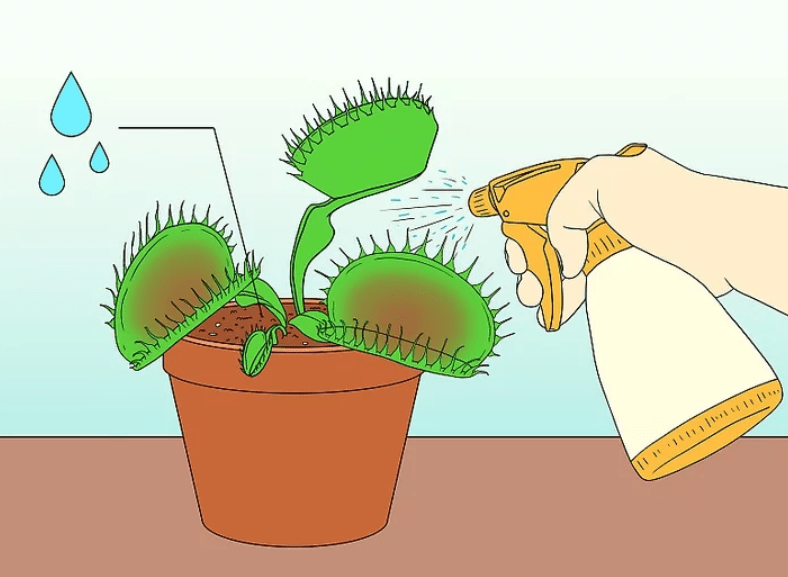
Ongoing care and maintenance are crucial for the health and growth of your plants. Once the seedlings have been transplanted, it is important to continue to water them regularly, making sure the soil is consistently moist but not waterlogged. You should also provide them with plenty of sunlight to support their growth. As the plants continue to grow, you can gradually reduce the frequency of watering and allow the soil to dry out slightly between waterings to encourage strong root development. It is also important to monitor the plants for any signs of pests or diseases and take appropriate measures to address any issues that may arise. Regularly fertilizing the plants with a balanced fertilizer can also help to provide them with the nutrients they need to thrive. By providing ongoing care and maintenance to your plants, you can ensure that they continue to grow and flourish in their new environment.
Common Challenges and Troubleshooting
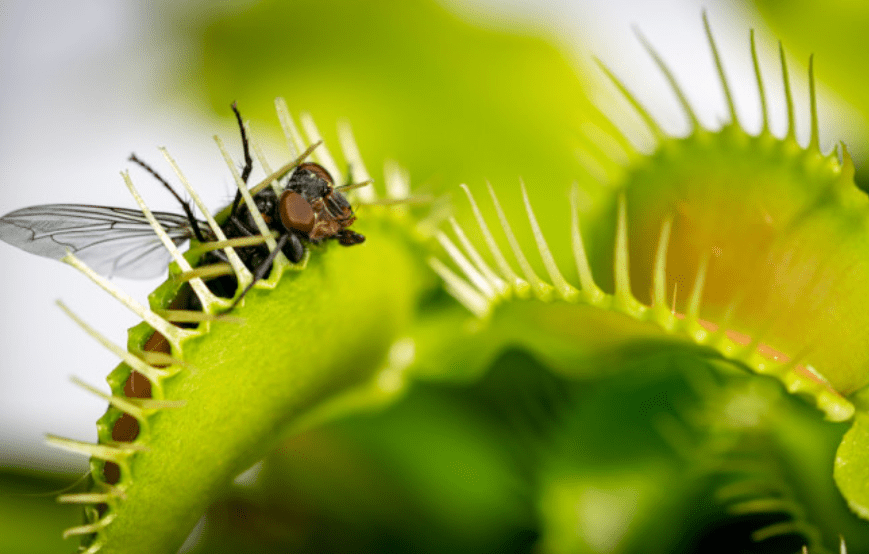
Even with proper care and maintenance, plants can still face common challenges that may hinder their growth. One common issue is overwatering, which can lead to root rot and other diseases. To avoid this, make sure to check the soil moisture levels regularly and only water when necessary. Another challenge is pests, such as aphids or spider mites, which can damage the plants. To address this, you can use natural pest control methods or pesticides if necessary. Additionally, inadequate sunlight or poor soil quality can also hinder plant growth. To troubleshoot these issues, consider moving the plants to a sunnier location or amending the soil with organic matter to improve its quality. By being proactive and addressing these common challenges, you can help your plants thrive and reach their full potential.
Tips for Thriving Fly Trap Plants
If you want your fly trap plants to thrive, there are a few common challenges to be aware of and overcome. One of the main issues is overwatering, which can lead to root rot and other diseases. To prevent this, make sure to check the soil moisture levels regularly and only water when necessary. Another challenge is pests, such as aphids or spider mites, which can damage the plants. To address this, you can use natural pest control methods or pesticides if necessary. Inadequate sunlight or poor soil quality can also hinder plant growth. To troubleshoot these issues, consider moving the plants to a sunnier location or amending the soil with organic matter to improve its quality. By being proactive and addressing these common challenges, you can help your fly trap plants thrive and reach their full potential.
In conclusion, growing fly trap plant seeds successfully requires patience, attention to detail, and the right growing conditions. By following the step-by-step guide provided in this post, you can ensure that your fly trap plants thrive and continue to capture those pesky flies. Remember to provide the right amount of sunlight, water, and soil conditions, and avoid common mistakes such as overfeeding or underfeeding the plants. With proper care, you can enjoy the unique and fascinating experience of growing and caring for fly trap plants in your own home or garden.
Frequently asked questions And Answer
To plant fly trap seeds, you’ll need a pot with drainage holes, a mix of peat moss and perlite, and distilled water. Place the seeds on the soil and cover them lightly with a thin layer of the soil mixture.
It’s important to keep the soil moist but not waterlogged. Use distilled water to water the seeds, and make sure the soil doesn’t dry out completely.
Fly trap seeds need warm temperatures of around 70-85 degrees Fahrenheit to germinate. They also require bright, indirect sunlight to grow.
It can take anywhere from a few weeks to a few months for fly trap seeds to germinate. Be patient and continue to provide the right conditions for growth.
Once the seedlings sprout, continue to keep the soil moist and provide them with plenty of bright, indirect sunlight. Avoid feeding them insects until they are at least six months old.
Yes, you can definitely grow fly trap seeds indoors. Just make sure to provide them with the right conditions of warmth, light, and moisture.
It can take several years for fly trap plants to reach maturity. With proper care and the right conditions, they can live for many years.
Growing fly trap plants from seeds can be a bit challenging, but with the right knowledge and care, it is definitely possible to successfully grow them. Be patient and attentive to their needs.
